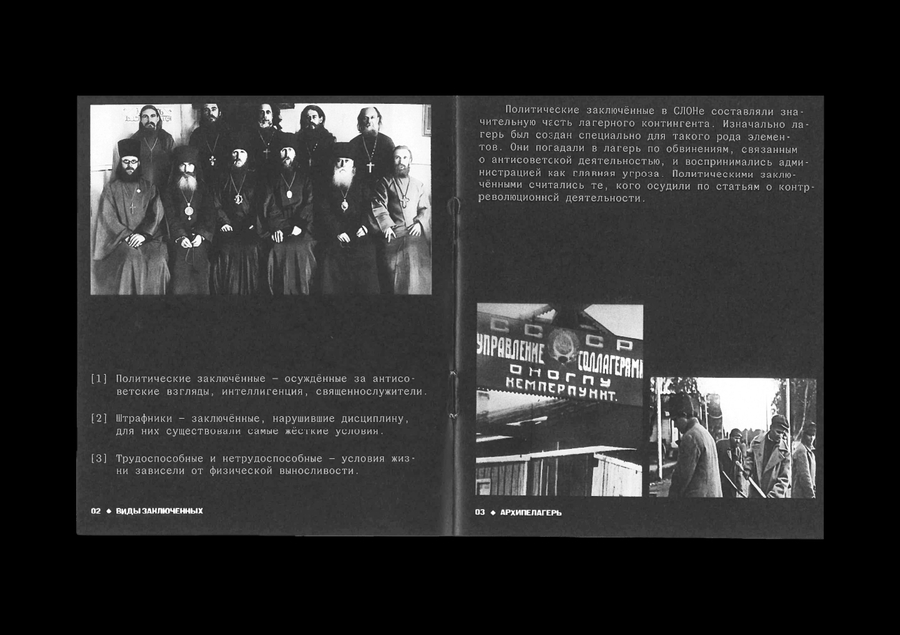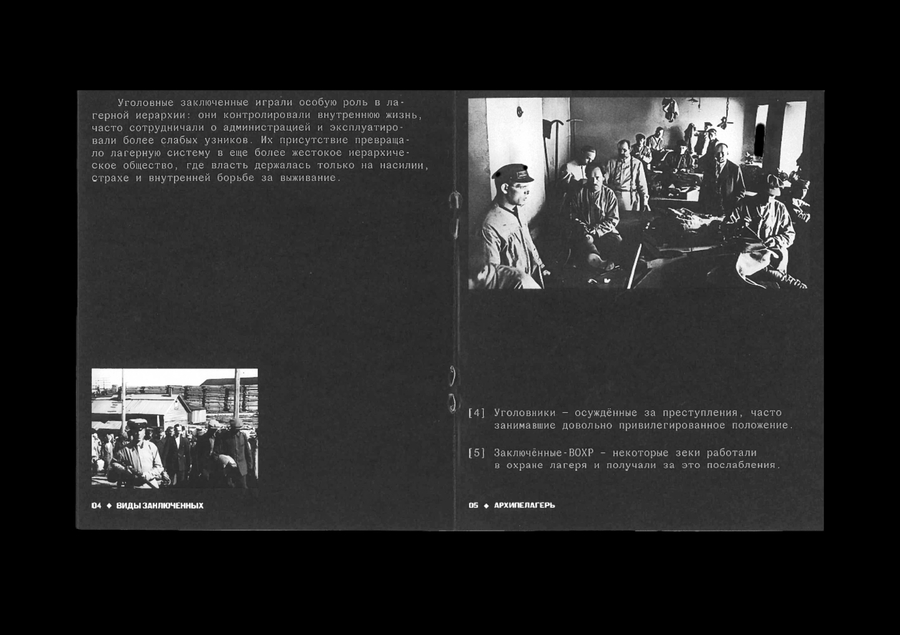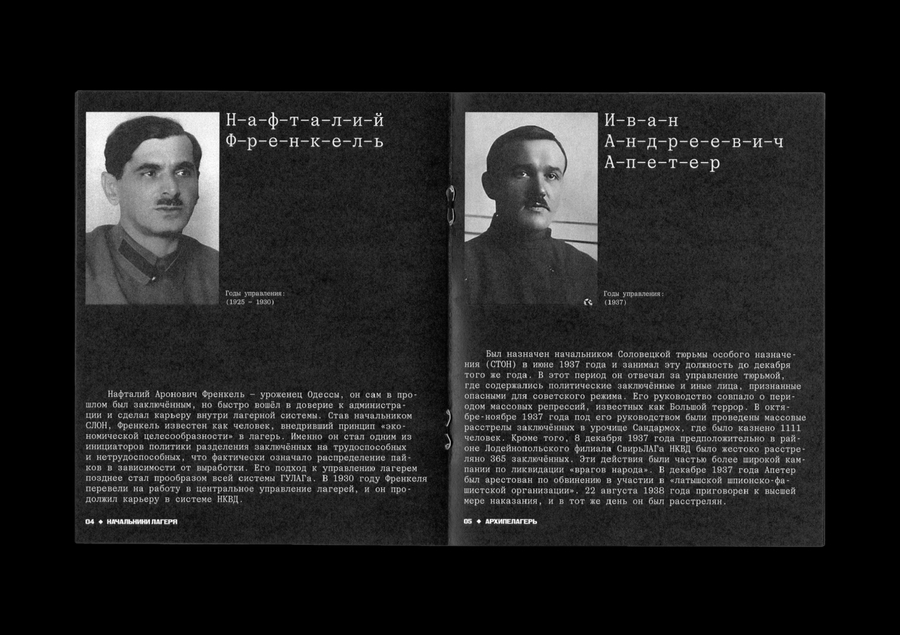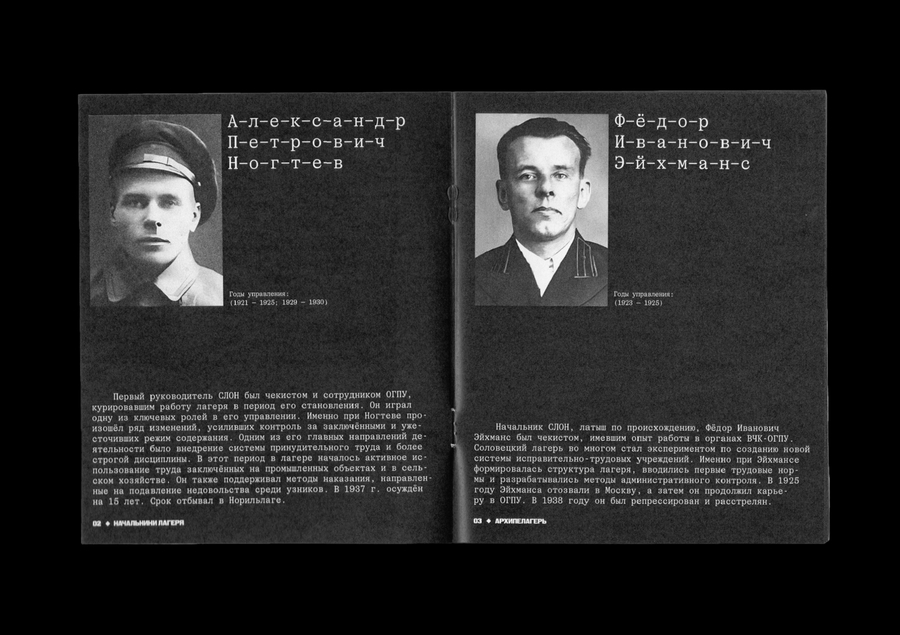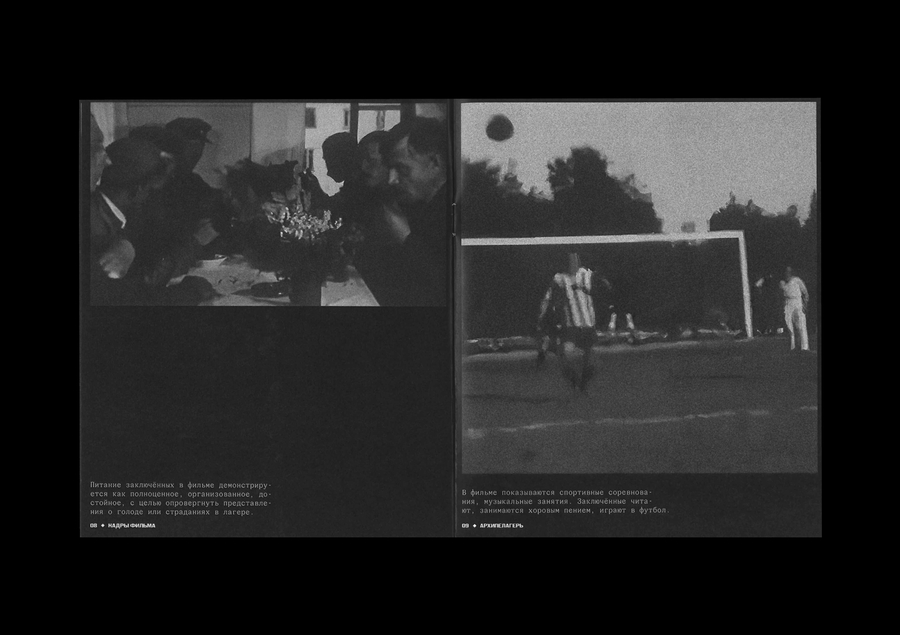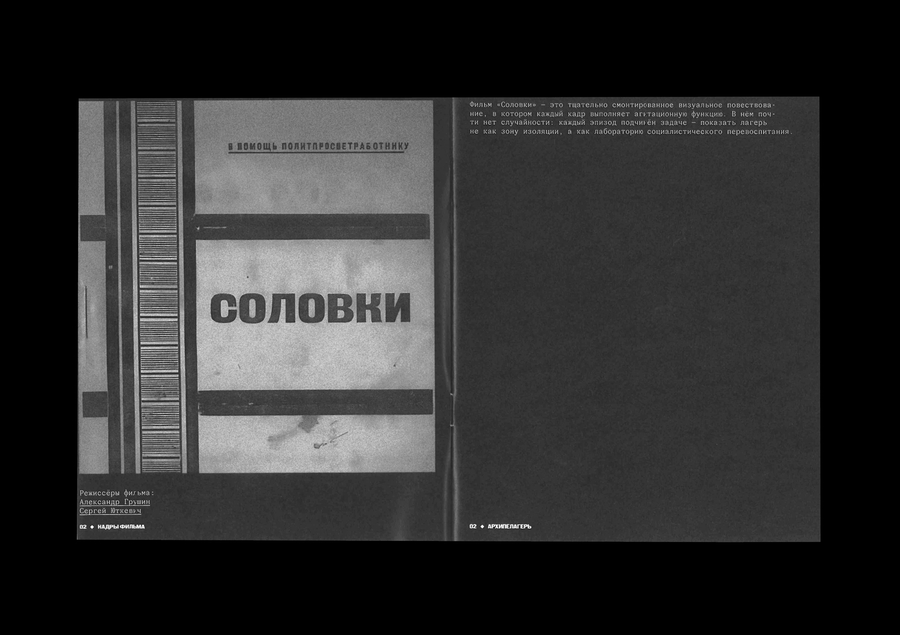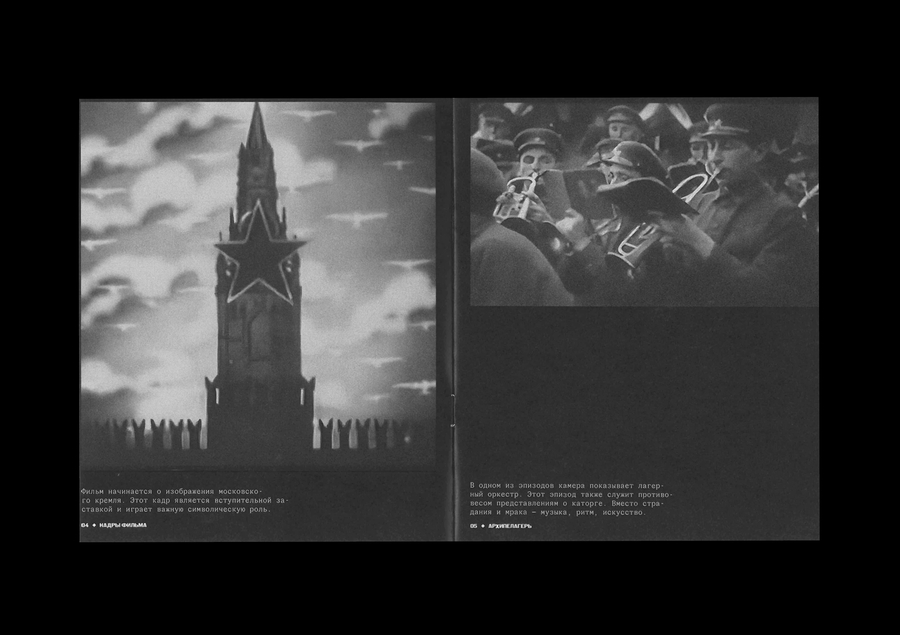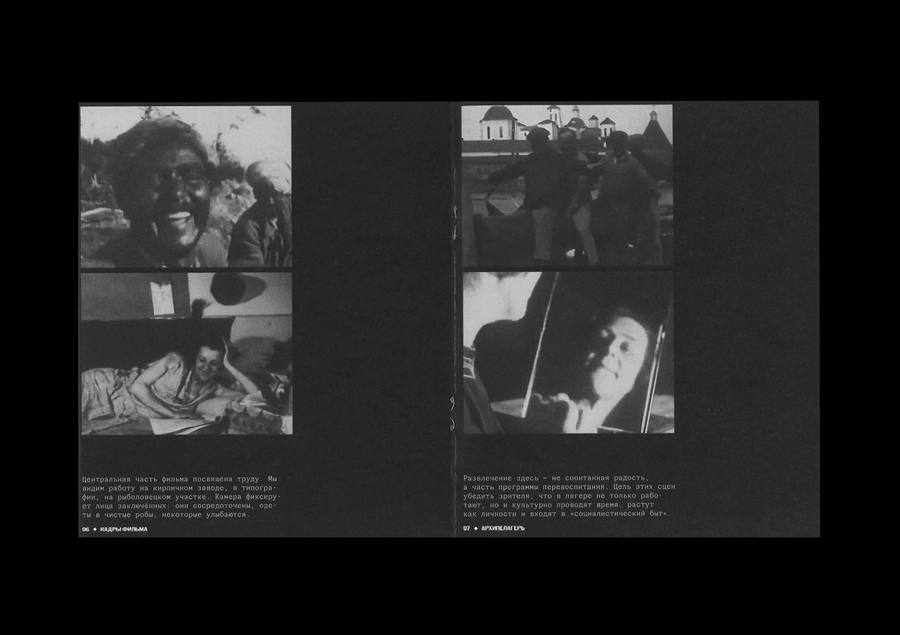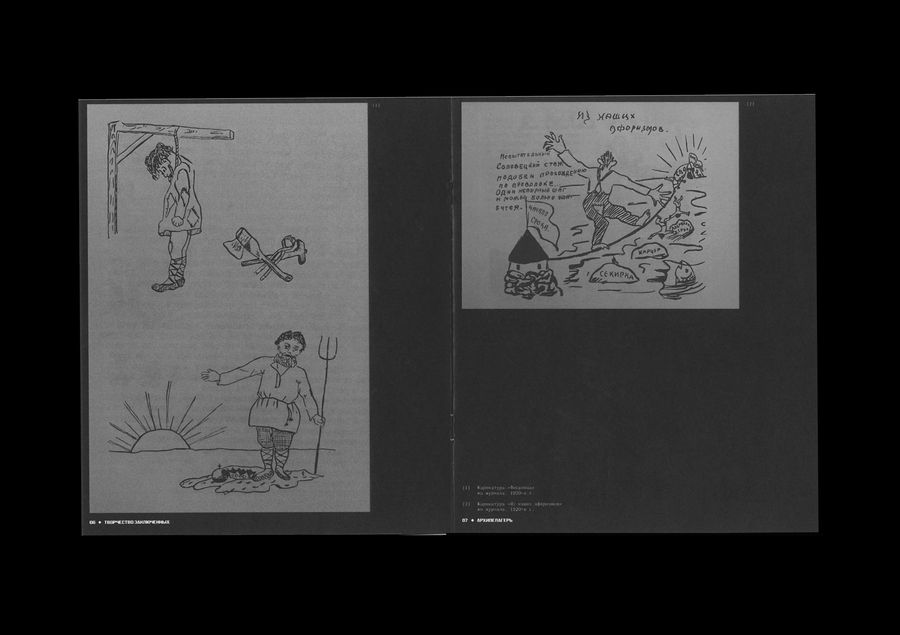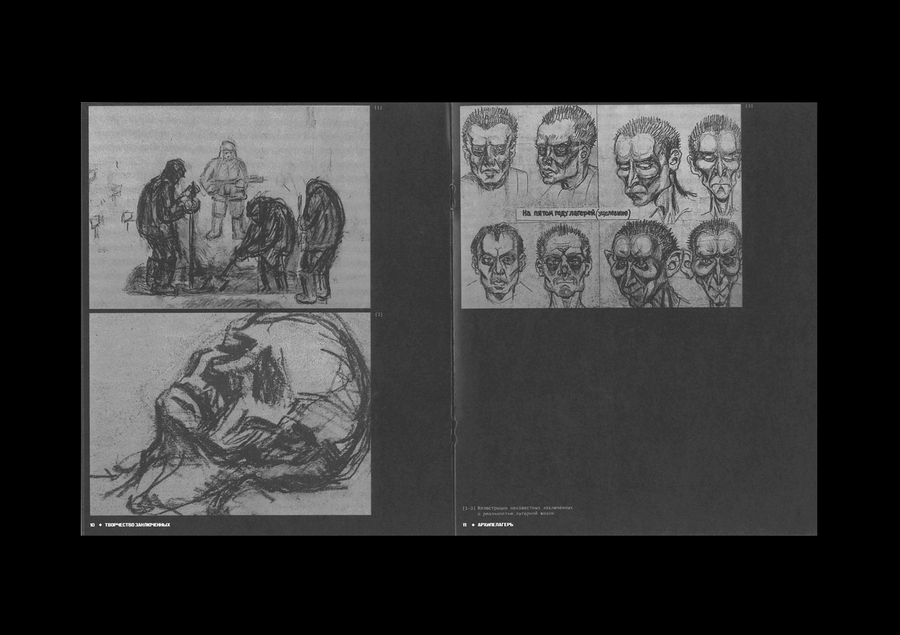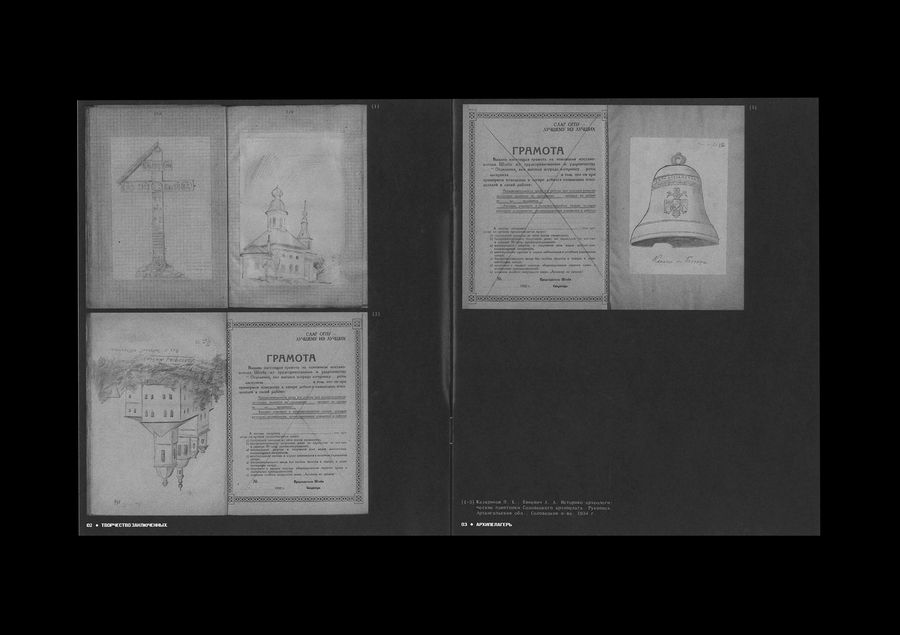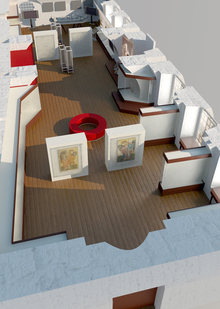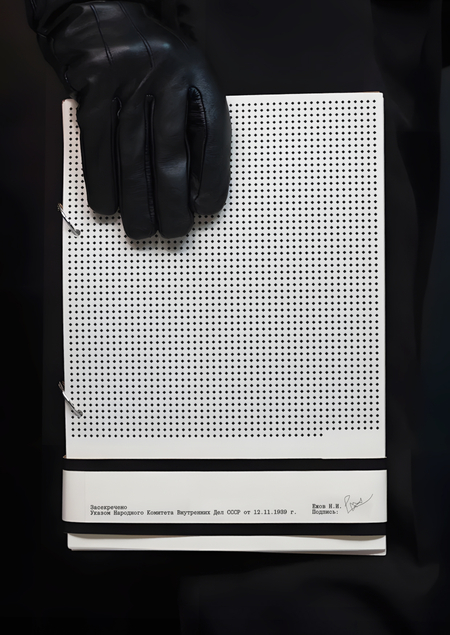
ARHIPILEAGER
The visual study focuses on the lives of people in the Solovec camp, described from five different points of view, from State structures and propaganda to the personal stories of prisoners.
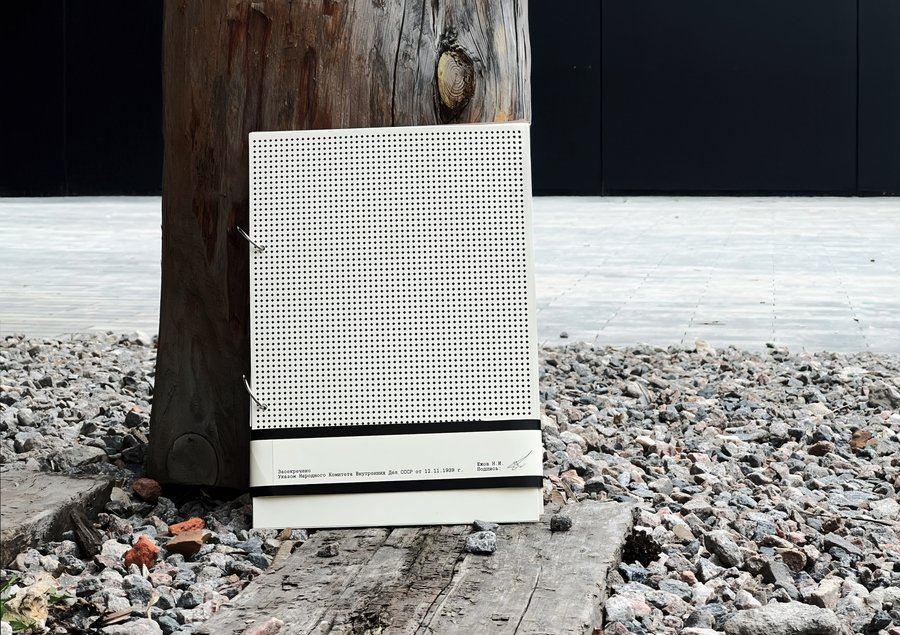
The project sought to demonstrate a diverse camp reality that had evolved over time, depended on the human role in the system and could include many other aspects.
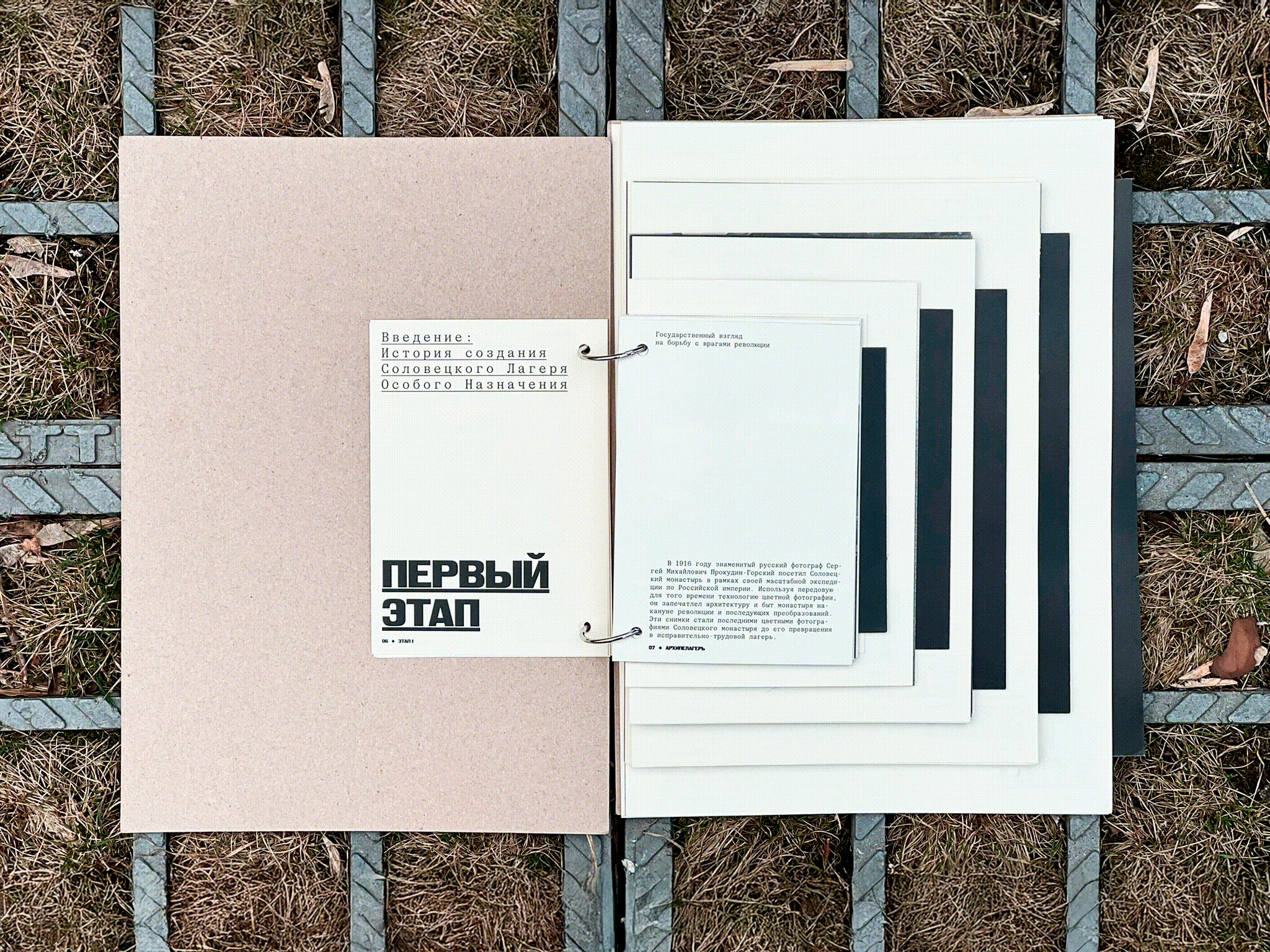
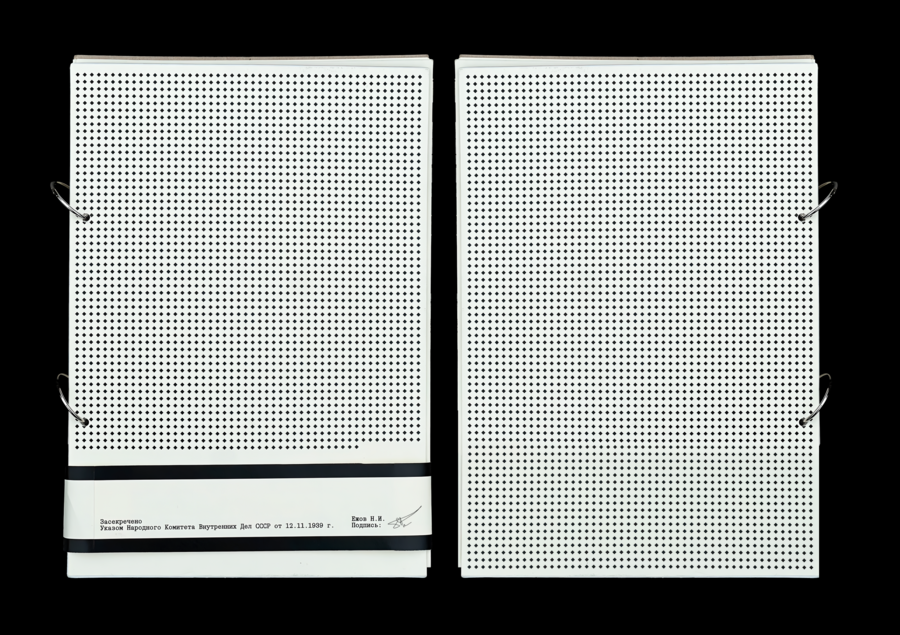
The first chapter describes the history of the camp and the state view of its existence.
The Nightingale Monastery during the camp’s existence.
The internal currency of the Solovetsk camp.
Prisoners were divided into two main groups: political and criminal.
The second chapter describes the activities of IECD staff and their view of life in the camp.
The third chapter refers to camp propaganda and the way in which it presented camp alarms through various means of advocacy.
The footage from the 1928 promotional film «The Nightingale».
The Solovetsk Theatre poster, which was in operation during the camp’s existence.
The fourth chapter describes the real evidence of prisoners ' lives through various artifacts.
Types of SLONA prisoners' tattoos.
The remains of the victims of the detention facility on the Sekerna Mountain.
Different kinds of creativity of camp inmates.
The fifth chapter describes the personal history of the prisoners, their difficult journey and the consequences of being in the Solovec camp.
References to the book: Second phase Fourth phase
